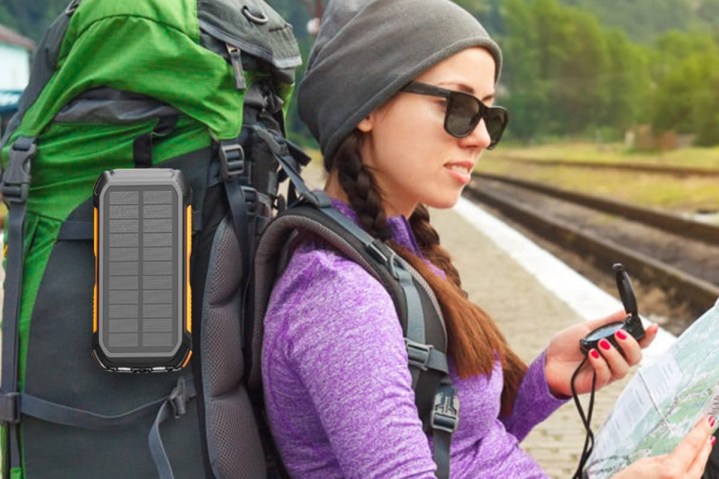With the sun out and everyone enjoying the outdoors, you may be thinking that a portable solar panel can keep your various electronics charged on your next outing. Just prop it up against the cooler at the beach and everyone’s phones can be snapping selfies all day, right? All while using sustainable power? That’s downright wholesome as heck.
The sad reality is that bringing portable solar panels along rarely pans out that way. It ends up looking more like spending a few hours babysitting panel angles to get the maximum amount of sunlight, constantly checking the forecast to make sure there isn’t any cloud cover on the way, all in order to get half a charge on a single phone. Meanwhile, everyone else is making the most out of their summer. Skip solar — there’s a better way.
Portable means packable
Often enough in the marketing literature for “portable” solar panels you’ll see happy families hanging outside of an RV with five briefcases worth of solar panels splayed on the front step. Sure, they’re portable insofar as you can pick them up and move them, but not a lot of people are going to dedicate that much room in their trunk for anything less than a multi-week excursion far from civilization. To me, portable means you can fit it in your backpack. Solar panels in that size category are usually $100 or less and generate under 50W.
Crunching the numbers
Let’s say you have one of these foldable 50W panels strapped to your backpack on your next hiking trip. At 5V, that works out to being able to charge 10,000 mAh in an hour, which is roughly enough to charge a phone 100% twice. On paper, this looks great, but it assumes perfect efficiency. Solar panels are rated under relatively static laboratory conditions which don’t take a load of variables into account, like angle to the sun, cloud cover, dust on the panel, and heat. There’s no way to mitigate all of that while on the move. Larger solar arrays face the same issues, but make up for them in the volume of panels. The only real saving grace in the field is that your battery won’t be completely dead while you’re charging it, and you won’t need to top it up completely to still get use out of it.
Where does solar power work well?

Having a panel and battery that you can carry around is convenient and all, but it shouldn’t be treated as much more than an emergency measure for when you’re stranded in the middle of nowhere. The fact that you can get a portable one that generates power is a novelty for sure, but little more than that. Solar power works best at large scale. That means big panels angled for optimized coverage, all day long. Add them to your home, trailer, or cottage. Once you start dipping below that size, the utility of a solar panel drops. Plenty of accessory manufacturers will integrate solar panels directly on their products, which makes sense for low-stakes, low-demand, off-grid use cases like garden lights. That sub-1W panel built into your battery will take eons to charge it though, not to mention the damage you’re doing leaving your battery out baking in the sun.
What should I bring on my camping trip instead?
Batteries! If you’re going to be out away from a plug for two or three days, a portable power bank should keep your phone topped up just fine. Our list of the best portable chargers includes a model that costs just $21 and offers 20,000mAh of charge — that’s enough to fill an iPhone 13 from 0% to 100% more than six times. You won’t have to worry about good weather to get a charge, and you’ll ultimately save on weight and clutter in your pack. If you’re super hardcore and will be off-grid for longer than that, one of these smaller portable solar panels is, at best, an emergency precaution to bring along.
Why do you hate solar power so much, Simon?
I don’t! Solar is the way forward for electrical grids, and the fact that panels are cheap enough that we can slap them just about everywhere is great. By all means, grab those portable solar panels to charge your gadgets on your next camping trip, just don’t put yourself in a situation where you need them to work in order to get by. Instead, invest in a bigger battery you can charge at home beforehand, and maybe bring a panel or two just for fun. Better yet, leave the panels behind altogether so you can spend less time stressing about the best angles, and more time catching some rays yourself.



